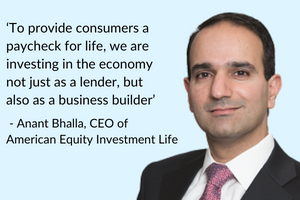
One Life Insurer’s Pivot to Private Assets
American Equity Investment Life’s ‘AEL 2.0’ strategy is designed to help it thrive even in a low yield environment. Allocating up to 40% of its money to ‘private assets’ is key to the fixed annuity specialist's plan.



